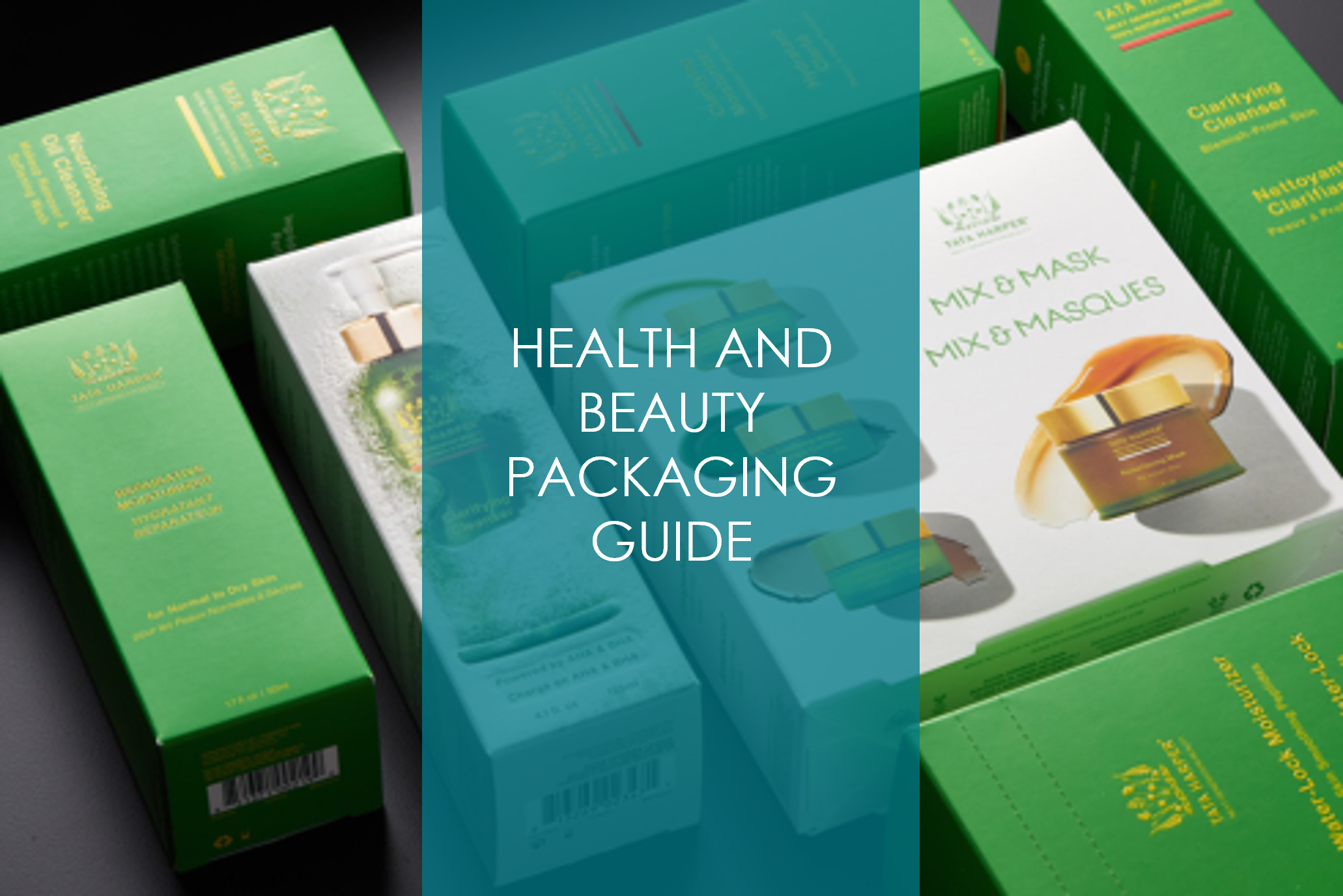
- INTRODUCTION
Fashions change, ingredients change and social norms change (slowly). But in the Health and Beauty marketplace, one thing defies change: the absolute necessity for fresh, on-trend, true-to-brand packaging that aligns with most current consumer expectations, stands out amid proliferating SKUs and adds to the overall customer purchase experience.
To achieve all that, personal care, health, beauty & wellness manufacturers—some of the most well-recognized global brands on the planet—must focus ever more closely on amplifying their brand presence on-shelf and online through strategically sound, graphically arresting packaging that captures consumer eyeballs, captivates with brand-centric resonance, and delivers ever-more effective product presentation/protection.
Just because it’s pretty doesn’t mean it’s not also ruthlessly competitive.
Perhaps that’s why many of the biggest names and astonishingly beautiful products turn to JohnsByrne to achieve it. To deliver customizable, interactive, multifunctional, time-saving and optimized packaging, JohnsByrne brings some of the industry’s most experienced, creative and capable teams with the collaborative spirit to adapt our technology and processes to your project needs. We understand the importance of amplifying clients’ packaging options with unexpected ideas—sustainably (more on that shortly).
Here are some critical thoughts that can lead to more innovative health and beauty packaging that will entice, attract and ultimately convert consumers to brand customers.
- THINKING ABOUT HEALTH & BEAUTY PACKAGING: WHERE TO START
“Love at first sight. Love at first touch.”
At its core, genuinely great health & beauty packaging adds value. Unexpected structural & graphic design, materials, colors, textures and typography should all combine to create singular packaging that looks indulgent, conveys the product attributes (quality, luxury, eco-friendly, etc), while deriving and contributing to credibility from its recognizable brand.
In other words, the consumer perceives added value through the shopping and unboxing experience before ever using the product. It is also vital to differentiate the product and make it stand out within its category. This instant visual connection to the product they want and the value they attach to it is the grail of health and beauty packaging—the clear signal that THIS is the product I want somewhere in or on my body, home and life.
And, of course, offers permission to pay more for it.
Market research:
Whether for an entirely new product line, a line extension or update, your company no doubt conducted market research to guide that product’s development. Such research is equally essential for guiding package design, looking for touchpoints of relevancy to the target market(s).
What are customers looking for in this segment? How can packaging deliver on the brand promise? Do they want the packaging to help them envision a more attractive self, for example, or perhaps a more luxurious lifestyle? Do customers want information regarding specially formulated ingredients or anti-aging technologies they heard about on social media? (Some products require detailed, informative packaging vs. simply owning the shelf).
Then, there are questions of use and practicality. How much does packaging have to contribute in terms of product protection/integrity? UV protection? Scratch protection? How much potential is there for “kitting” related products or refills at retail? Does the product require special, visually prominent tamper-proofing? Or, will the packaging need to assist in product use somehow, making it more accessible to grip, etc?
Process considerations:
Before structural design, consider your own business processes: How will you manufacture, fulfill, ship and display the product at retail or online? How will it be priced? What advantages and constraints are in play in each of those areas (package design can majorly impact shipping costs, for example). You’ll also need to determine how the product(s) will be inserted into packaging cartons (manually or through an automated process).
Then there’s the question of SKUs and display at retail, which is particularly important across mass, “masstige,” and prestige retail channels. How are products currently displayed, or are there in-store changes for that? How much space do you have vs. what you need in a retail outlet, and will the packaging be located at eye level? Quick answer: You can’t have too much retail intelligence regarding how potential customers will interact with the product/packaging in-store at that critical first moment.
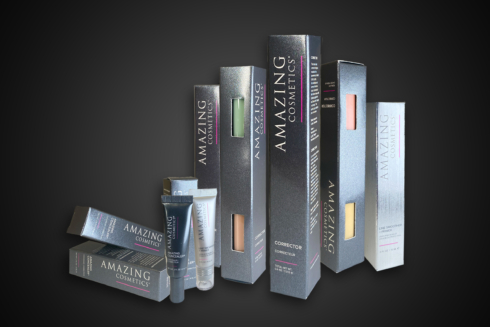
See AMAZINGCOSMETIC’S Packaging
Catching the eye, keeping the promise, expanding your reach.
The entire HBA segment walks that very fine line between innovation and tradition, where eye-catching and breathtaking must intersect with the traditional brand values that earned you that consumer’s loyalty in the first place. Health & beauty packaging involves fresh thinking in both structural and associated graphic design: implementing unique features, trays, inserts, reveals, exciting shapes, folds and sizes, all while remaining close enough to “the comfort zone” in which customers are comfortable purchasing.
And don’t stop at individual product packaging. Gaining exposure in our increasingly crowded marketplaces can benefit significantly through multiple packaging solutions, even for luxury brands. Consider adding new chapters to your products’ retail stories in compelling ways: open-stock folding cartons, promotional cartons, rigid set boxes, sampling programs, gift-with-purchase (GWP) packaging etc. With JohnsByrne, the only limit is our collective imagination.
- TALKING ABOUT TRENDS: WHAT’S DRIVING HEALTH & BEAUTY PACKAGING TODAY
Leading from the middle: more and more midsize HBA companies are setting trends:
Given market share dominance, a handful of big names traditionally set the trajectory for a segment, and health & beauty is no exception. That said, it is worth noting that the big-gun brands in HBA are no longer leading innovation and breakthrough design in packaging; they are midsized companies “pressing the limits” and setting many of the most popular trends.
Why? First, of course, mid-size companies are scrambling harder to establish their brands as leaders in the industry, so they are more likely to experiment with exciting new packaging solutions. In the drive for market share gains, mid-size companies are more willing to take risks and invest in new ideas that may or may not hit it big. Such companies may also have a larger share of operating money available for breakthrough packaging strategies—relatively speaking—since they may have more modest infrastructural demands.
Conversely, the incentives to innovate for more established companies are more challenging to realize. With corporate growth, global and corporate demands necessitate stringent budget measures and cost-cutting to maintain healthy bottom lines, locking larger companies into current packaging strategies even when they want to try something innovative. Change that does happen tends to be incremental and over more extended periods. They have less to gain and more to lose, especially since they may even face heavy pushback when trying new, daring approaches to packaging.
That said, keep in mind the very high quality of baseline packaging for such health and beauty industry giants. Rather than using lower-end packaging solutions, they utilize high-end methods that remain relatively static over time.
That leaves mid-size and new HBA companies with very clear opportunities to bring new and exciting beauty product packaging to market by hitting a “sweet spot”: thriving in their chosen market segment without growing to the point where corporate profit margins overwhelm innovative decision-making.
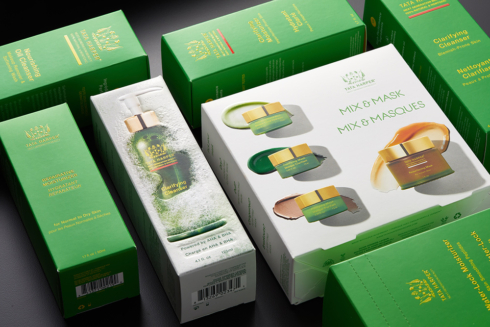
Read the Tata Harper Customer Success
Breaking down trends in health, beauty & personal care packaging:
Manufacturers must be particularly in tune with consumers as trends change and market preferences shift in this segment to adapt products and messaging to meet them. Packaging—often the first engagement between product and consumer—must lead in responding to them.
Personal care product packaging for both men and women is rapidly evolving as well, borrowing successful cues from nutraceuticals and cosmetics (among other segments) to create exceptional visual appeal and functionality.
Such trends are many and varied across all three segments and include:
Simplified design
Today’s best designs display clarity of purpose and convey a simple message in an overcrowded market: in other words, essentialism. In the hands of sophisticated graphic designers, this simplification identifies what the customer is looking for and presents it with refreshingly honest clarity. It involves:
- Simple text and graphics
- Larger text
- Straightforward, simple messages
- Basic shapes
- Primary colors
Many steps forward
It’s not surprising that consumers today often refer to a beauty “regimen”: cosmetics can be as much about the experience as the product itself. Many call for a three- or even four-step process that may change throughout the day. Don’t hesitate to headline such multi-step use for your health and beauty products. Such a protocol appeals to the modern consumer. The process should be apparent through product packaging, including applicators or accessories for topical products.
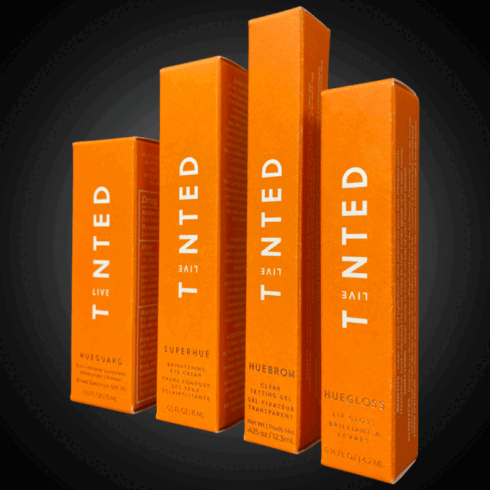
Read the Live Tinted Customer Success
Green is good
A new generation of consumers is nourishing the growth of environmentally responsible packaging, including recycled paper and FSC® certified materials. Everyone, it would seem, is going green. And blue.
Color psychology informs us that green represents balance and harmony, security, wealth, and growth while suggesting organic, natural, and healthy color options for environmentally friendly product packaging. Blue conveys trust, honesty, strength, reliability, and unity and can also give the impression that a product contributes to a state of relaxation or serenity.
Simplicity and shapes from nature
The society-wide trend toward more natural products and away from ultra-processed anything has dominated the food and beverage industry for years, and it reverberates strongly through the health and beauty industry. Less can be more regarding packaging, as consumers gravitate to products with fewer ingredients seen as more “natural.” Simplicity can convey that natural vibe, reflect purity and earn additional attention even as it reflects this robust trend in consumer preferences.
Organic shapes, as found in nature, create a soft, calming effect upon the consumer and are emerging in new personal care packaging designs. Far beyond the classic box, innovative designs now include more circular packaging… natural looks with a curving, flowing appearance.
Creating multisensory experiences
Health and beauty products aren’t just about the end result but also the experience. Fragrances in cosmetic products can help stimulate the mind or have a calming effect, and warm or cool elements can deepen the sensory experience. This multifaceted experience should be reflected in your packaging through colors, graphics, textures, and various other design elements. Let your packaging introduce the sensory experience that is to come.
Keeping up with consumers: individual/travel/sample sizes
In today’s highly mobile world, consumers demand personal packaging to “meet them where they are…” to meld effortlessly into their frenetic lifestyles. While small samples of cosmetic products were once handed out to entice consumers, smaller packages play a new role in the health and beauty segment. Sample and single-use products are now being sold alongside full-size products, allowing consumers to purchase a trial version before committing to an expensive product. Fresh, unique, single-serve/on-the-go product packages and multipacks provide that convenience, even as they deliver an added advantage in the marketplace. Today, even the most prestigious brands have addressed this trend, offering super-premium products in smaller sizes.
Smart packaging
Consumers today expect more intelligently designed packaging with more functional features: so-called “smart” packaging. Innovative packaging elevates typical package features to monitor freshness, extend shelf life, improve safety and convenience and provide quality information.
Come and get it.
Over decades, JohnsByrne has evolved our unique end-to-end production process and one-vendor accountability to meet the packaging needs of global brand powerhouses as well as new-to-the-market innovators… developing quick-to-market packaging solutions in response to emerging trends with individual clients’ specific requirements foremost in mind. You know your product better than anyone else, and our team of in-house structural and graphic designers, project managers and highly experienced technical staff experts have the knowledge and experience necessary to translate your brand into a coherent, innovative, and elegant packaging solution. Contact us to learn more.
- SUSTAINABILITY/ECO-FRIENDLY PACKAGING
To continue thinking of sustainability as “a trend” is simply missing the boat. Regardless of the politics, sustainability is a genuine, apparent driving force in commerce today and will remain so for the foreseeable future.
As consumer behavior and preferences continue to bear out that perception, health & beauty manufacturers have become increasingly conscious of their environmental footprint, with a clear focus on product packaging. As part of environmental stewardship efforts, leading brands are minimizing packaging waste with eco-friendly packaging innovations across the health & beauty space.
Remember, brands that embrace eco-friendly packaging attract more customers who prioritize environmental responsibility, a constantly growing segment. Such alignment between brand values and consumer preferences can significantly impact customer loyalty and brand reputation, increasing sales with eco-conscious consumers.
Another reason JohnsByrne is a leading single-source supplier to HBA companies worldwide is that it helps guide brands toward sustainable yet practical solutions aligned with their environmental commitments while maintaining product integrity, shelf appeal, and brand values.
Widening material choices
Eco-friendly packaging—intended to reduce its impact on the environment—is created from biodegradable, recyclable or reusable materials. For cosmetics and skincare products, this is most often paper, glass, aluminum, recycled plastics, or plant-based plastics.
Paper, of course, is biodegradable and can be recycled repeatedly. Certified sustainable paperboard options may include FSC (Forest Stewardship Council) and PEFC (Programme for the Endorsement of Forest Certification) markings, which certify that the materials are sustainably sourced. Paperboards that contain up to 100% PCW (post-consumer waste) content are readily available.
Glass and aluminum can be recycled infinitely without losing quality. And while plastic is also not infinitely recyclable, recycled plastics and plant-based plastics are available from renewable resources that biodegrade under specific conditions.
They are a significant step towards reducing packaging’s negative environmental impacts.
Sustainable packaging: think big picture
Material choices are one thing. Designing cosmetics and skincare packaging to address the entire package lifecycle is quite another, as it must include sourcing, package design, manufacturing processes, logistics, usage, and ultimate recycling/disposal.
JohnsByrne’s focus is on minimizing environmental impact at every stage. It promotes a “circular economy” where materials are recycled and reused while waste is designed out of the system. It includes renewable energy sources for manufacturing, reduced water use, and rethinking logistics to reduce carbon emissions.
Eco-Friendly and Sustainable Practices: look to the future with JohnsByrne
As a vertically integrated packaging provider, JohnsByrne can assure adherence to the highest environmental standards from concept to completion. Our structural engineering lab, on-site ink lab, “Unlimited Pressroom,” and in-house finishing and fulfillment services give us a position to deliver on the true promise of eco-friendly and sustainable packaging solutions.
Our structural engineering lab optimizes material usage in design, ensuring durability while reducing the need for extra packaging. We formulate eco-friendly inks that are safe for the environment and the end user. FSC and PEFC chain-of-custody certifications allow JohnsByrne to offer sustainably sourced material options. Our advanced pressroom utilizes state-of-the-art, energy-efficient technologies, while our finishing & fulfillment services prioritize responsible disposal and recycling practices.
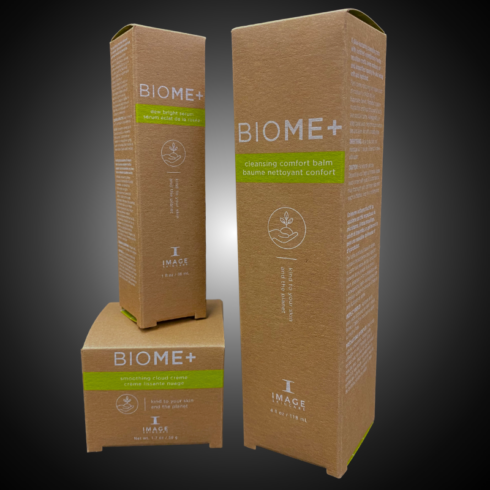
Read the Image Skincare Biome+ Customer Success
As we look to the future, we expect to see even more innovative and sustainable packaging solutions emerge, and JohnsByrne will be there, continuously exploring new materials, technologies, and processes.
- MAKING THE MOST OF THE HOLIDAYS WITH PACKAGING
Holiday packaging that rises to the occasion is vital to bolstering holiday profits. And with good reason: according to The National Retail Federation, holiday season sales represent up to 30% of total annual sales for many retailers.
When executed correctly, one-of-a-kind, inspired holiday packaging can jumpstart sales during the holiday buying season. Key factors? Design, tactile elements and ability to capture the season’s spirit. Consider:
Exclusive holiday editions
This long-established strategy for driving additional holiday profitability at retail keeps winning, and no wonder: special packaging explicitly created for the holiday season makes a product more tempting. Holiday packaging should create the impression of quality and exclusivity even as it reflects your brand and unique product qualities. Once you’ve settled on a structure, consider making your product dominant on the shelf using foil effects, embossing, and special coatings appropriate for the time of year.
Gift-with-purchase kits
It appears that inflation isn’t going away. So, help shoppers get more from their holiday shopping budgets by creating gift-with-purchase sets. Special packaging with attractive added gifts is also an excellent two-for-one strategy: driving higher sales during the holiday season and introducing new products for the coming year. An additional plus: buyers can keep and try the product, use small-size products as stocking stuffers, or re-gift them. Again, this year, it will be all about added value when the holidays come around.
Ready-to-give packaging
Gift-ready packaging is a classic holiday tactic that delivers higher value for busy shoppers, especially the wait-til-the-last-minute variety. Wine and spirits, health and beauty products, electronics, and many more products become terrifically appealing around the holidays when you add the advantage of ready-to-give packaging. After all, you’ve essentially doubled their reason for purchase: a gift they’ll be proud to give and a gift they didn’t have to bother wrapping.
The wisest decision of the holidays this year…
Hitting holiday profitability targets obviously requires smart decisions about holiday packaging, including where to get it. The award-winning teams at JohnsByrne are unsurpassed in creating inspiring holiday packaging products that are also cost-effective. We manage every detail so you can have confidence in packaging specifically created to attract the eyes of busy shoppers including counter and other point-of-purchase displays to bring shoppers to your SKUs during the holiday season.
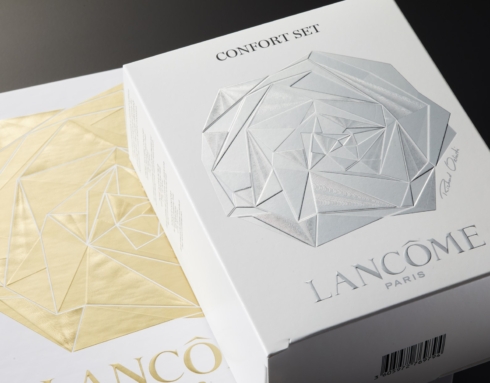
Read the Lancôme Customer Success
All the on-press decorations and techniques that say “Happy Holidays!” are here, including pearlescent and soft-touch coatings, grit/sand coatings, gold and silver sheen coatings, foil stamping, embossing, and countless other tastefully applied effects to make your product stand out.
Our teams include certified experts with decades of experience. Our range of G7-certified presses consists of the uniquely configured Press384—which revolutionizes what we can create on-press—to make never-before-attempted holiday packaging concepts possible at far less cost.
Related Posts
In the competitive beauty and personal care world, subscription boxes have carved out a powerful niche. Whether it’s monthly skincare samples, curated makeup collections or … Designing Subscription Box Packaging for Beauty Boxes: Discovery and Delight
Fragrance Packaging: How Brands Create an Unforgettable First Impression When it comes to fragrance, the first impression doesn’t come from a spritz of perfume—it comes … Fragrance Packaging: How Brands Create an Unforgettable First Impression
The Art of Luxury Cosmetic Packaging Design: Where Beauty Meets Elegance In today’s competitive beauty market, packaging is no longer just a container for beauty … Top Trends in Luxury Cosmetic Packaging Design to Elevate Your Brand
